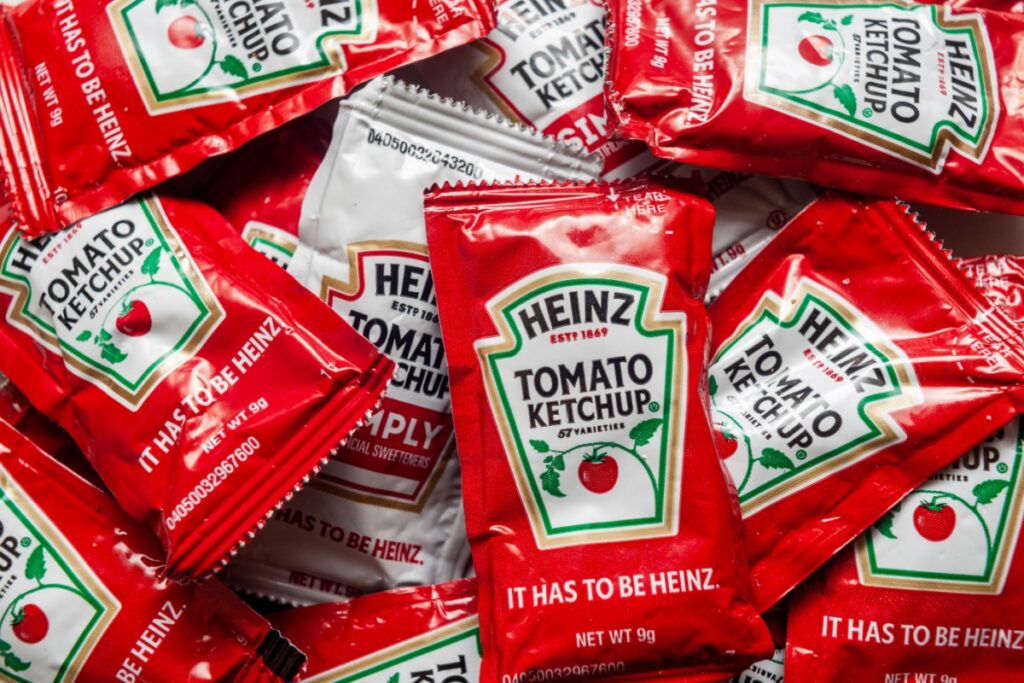15 Warning Signs You’re About to Eat at a Bad Restaurant
Dining out can be a fun experience, but sometimes, choosing the wrong restaurant can lead to disappointment — or worse, an upset stomach. Bad restaurants often show telltale signs that their food, service, or cleanliness may be lacking.
By spotting these red flags before you sit down to order, you can avoid a bad meal and enjoy your dining experience elsewhere. Here are 15 warning signs that suggest you might want to skip this restaurant and find a better option.
Unpleasant Odor Upon Entering

One of the first things you notice when entering a restaurant is the smell. A musty, sour, or strange odor lingering is usually a sign of poor ventilation or inadequate cleaning. Fresh, inviting smells are typical in good restaurants because they regularly clean and ventilate their spaces.
Odd odors might signal spoiled food, bad sanitation, or poor maintenance practices. When a restaurant smells off, it often means there are cleanliness issues. Trust your nose — an unappealing scent is usually a reason to leave.
Dirty or Sticky Floors and Surfaces

A sticky floor or table can immediately set off alarms about cleanliness. Restaurants should prioritize keeping their floors, tables, and countertops clean and free of crumbs or spills. Sticky surfaces indicate that cleaning is either being done poorly or not often enough.
If you notice this as soon as you sit down, it’s likely that the kitchen area may not be much cleaner. Hygiene standards in a good restaurant are high, and visible cleanliness is always a part of that. A dirty floor or table is often just the start of larger issues.
Unclean or Foul-Smelling Restrooms

Restrooms are a good reflection of a restaurant’s overall cleanliness. It can be a bad sign if the restrooms are neglected, with dirty toilets, empty soap dispensers, or foul smells. This often indicates that the restaurant does not prioritize cleanliness, which may extend to the kitchen.
Good restaurants regularly check and clean their restrooms to keep them fresh. If the restroom makes you uneasy, it’s a sign that other areas may not be well-kept either. A neglected restroom is a strong reason to reconsider eating there.
Poor Reviews or Low Ratings

Checking online reviews before dining out can give you an idea of what to expect. If a restaurant consistently receives negative feedback or has a low rating, it’s a red flag. Look for reviews that mention common issues, such as poor service, bad food quality, or uncleanliness.
Low ratings can often reflect problems that the management hasn’t addressed. Although reviews aren’t always 100% accurate, they often reveal recurring issues that could affect your experience. Too many complaints can be a sign to look elsewhere.
Overly Extensive Menu

While a large menu may seem appealing, it can indicate that the restaurant is trying to do too much. Restaurants with endless menu options often struggle to maintain high-quality ingredients and may rely on frozen or pre-made foods. When a kitchen has to prepare too many dishes, it can be difficult to execute each one well.
Smaller, focused menus often mean the kitchen can concentrate on doing fewer dishes with better quality. It might be a warning sign if the menu is huge and covers a range of cuisines. Quality often drops when a restaurant tries to do too much.
Slow or Disinterested Service

Poor service from the start is often a sign of a poorly managed restaurant. If the staff seems inattentive, rushed, or unenthusiastic, it can lead to a negative dining experience. Good restaurants have attentive servers who make sure customers feel welcomed and looked after.
If your server is slow to greet you, take your order, or seems distracted, it may indicate a lack of training or understaffing. When service is slow right from the beginning, it’s a sign that the dining experience might not improve. Poorly managed service can quickly ruin a meal.
Visible Signs of Neglect in Décor

The condition of a restaurant’s décor can reveal how much care is put into the business. Worn-out furniture, chipped paint, or dusty decorations suggest the restaurant might not be well-maintained. Good restaurants often pay attention to detail, ensuring their space looks fresh and inviting.
Neglecting the appearance of the dining area can hint at neglect in other places, like the kitchen or restrooms. A shabby appearance usually means a lack of investment in the customer experience. When a restaurant doesn’t care about appearance, it might not care about food quality either.
Loud, Distracting Music or TVs

Some restaurants play loud music or have multiple TVs blaring, making the atmosphere chaotic. Loud environments can make relaxing and enjoying your meal hard, especially if you’re there to have a conversation. Good restaurants usually keep the volume reasonable, creating a calm and enjoyable setting.
Excessive noise can suggest a lack of thought for the guest experience. It may be best to leave if it feels like you’re in a sports bar or a club, and that’s not what you’re looking for. A good dining atmosphere should make you feel comfortable.
Long Waits Even When It’s Not Busy

A long wait when the restaurant isn’t full can indicate disorganization or understaffing. It may point to poor management if you find yourself waiting for a table, service, or food when there are empty seats.
Good restaurants efficiently handle service, even if they’re not crowded. Unnecessary waits can be a warning sign of bigger issues behind the scenes. Long delays often mean the staff isn’t prepared to provide prompt service, and consistent delays can quickly become frustrating for guests.
Staff with Poor Hygiene or Attitude

The staff’s appearance and attitude can reflect the restaurant’s standards. If employees look unkempt or they have a rude or careless attitude, it might suggest poor training or management. Good restaurants emphasize professional and friendly service, with well-groomed staff who represent the establishment well.
Poor hygiene or negative behavior can create a bad impression and make the dining experience uncomfortable. When staff seem disinterested or impolite, it often reflects poorly on the entire restaurant. Professional, friendly service is a key part of a positive experience.
Dirty or Spotty Tableware

If your tableware or glasses are dirty or spotty, it’s a definite red flag. Clean tableware is an essential part of basic restaurant hygiene, and good establishments ensure every plate and glass is spotless. Dirty cutlery or glassware suggests that the restaurant may not be thoroughly cleaning its dishes.
This can be a serious health concern and a sign of poor hygiene practices. Spotty or unclean tableware can quickly ruin your appetite. Cleanliness in table settings is a basic expectation in quality dining.
No Clear Food Allergens or Ingredient Info

If a restaurant doesn’t provide clear information on allergens or ingredients, it can be risky, especially for those with dietary restrictions. Good restaurants often list common allergens or offer to inform you about ingredients. If staff seem unaware of what’s in each dish, it may indicate a lack of knowledge or training.
This lack of information can lead to confusion and discomfort for guests with food allergies. When a restaurant doesn’t prioritize this, it can create a risky situation. Transparent ingredient info is important for a safe dining experience.
Canned or Packaged Condiments Only

If a restaurant only offers single-use or packaged condiments, it could suggest low-quality food. Many high-quality restaurants take pride in serving fresh sauces, dressings, or condiments made in-house. Packaged condiments might hint that the food isn’t made fresh or that corners are being cut.
Fresh, house-made condiments often indicate the kitchen’s dedication to quality. While packaged items are convenient, they can take away from the overall experience. Homemade touches are a positive sign of quality.
Visible Critters or Bugs

Seeing any pests, like flies or rodents, is a clear sign to leave immediately. Good restaurants take pest control very seriously and ensure their spaces are free of bugs or other unwanted critters. Even a single pest sighting can indicate a more significant problem with cleanliness or food storage.
If you notice bugs or critters, avoiding the restaurant for health reasons is best. No reputable establishment should have visible pests near food, and cleanliness and hygiene standards are key to preventing this.
No Effort to Handle Customer Complaints

If a restaurant doesn’t address customer complaints well, it shows poor management and lack of care for guests. Good establishments listen to feedback and try to improve the customer experience whenever possible.
If staff seem dismissive or unwilling to address issues, it shows a lack of respect for guests. Bad customer service can quickly ruin a dining experience. Restaurants that ignore complaints usually don’t prioritize customer satisfaction. Handling complaints well is crucial for a positive reputation.
15 Foods Only The Wealthy and Elite Can Eat Now

Culinary trends are constantly evolving, and some foods have become more than just sustenance—they’ve become status symbols reserved for the elite.
15 Foods Only The Wealthy and Elite Can Eat Now
15 Practical Tips for Creating a Budget and Sticking to It

Creating and maintaining a budget is essential for managing personal finances effectively. By planning your expenses and tracking your spending, you can achieve financial goals and avoid debt.







